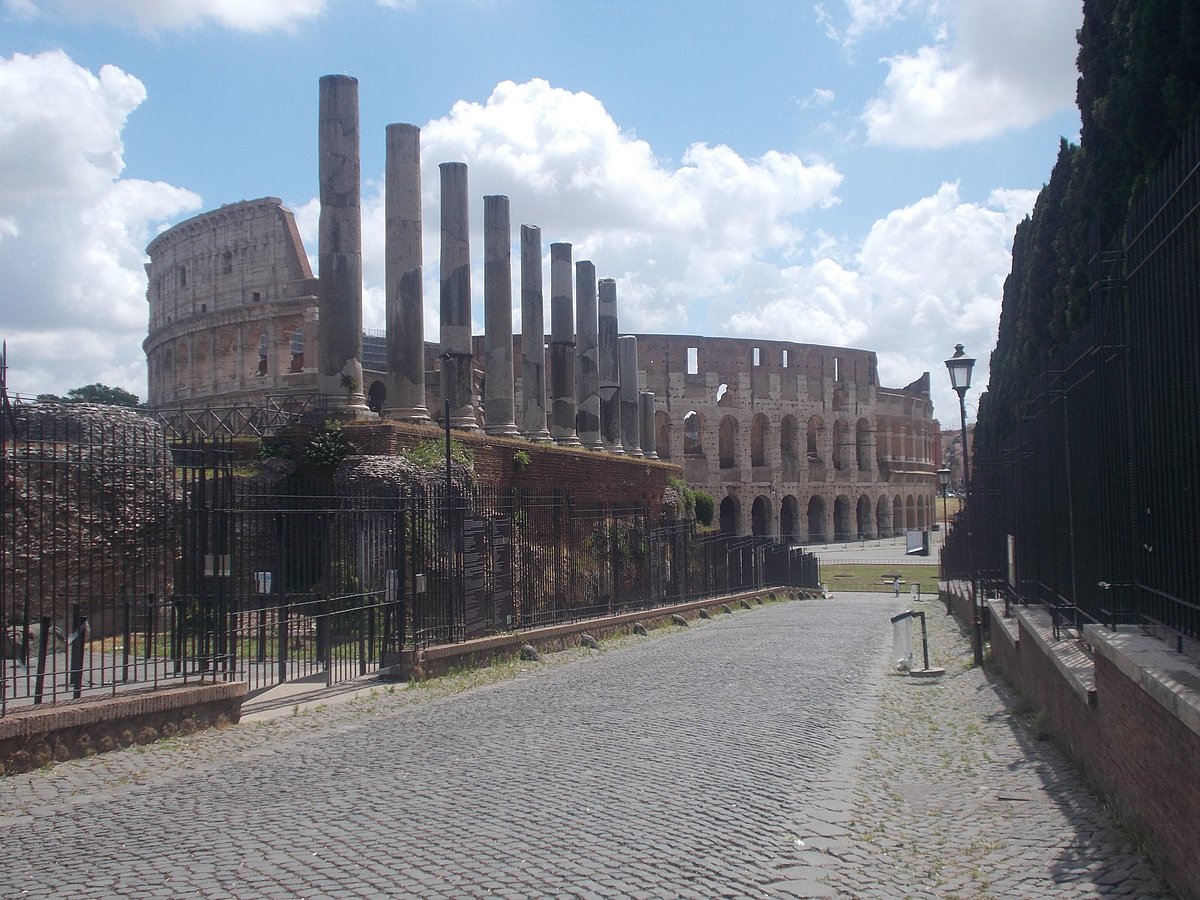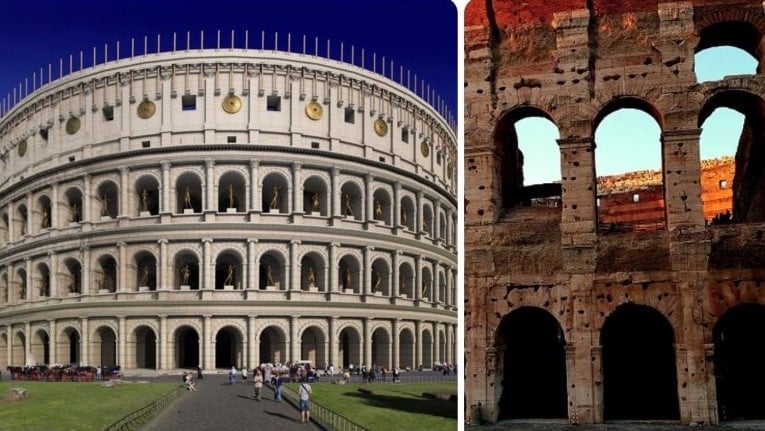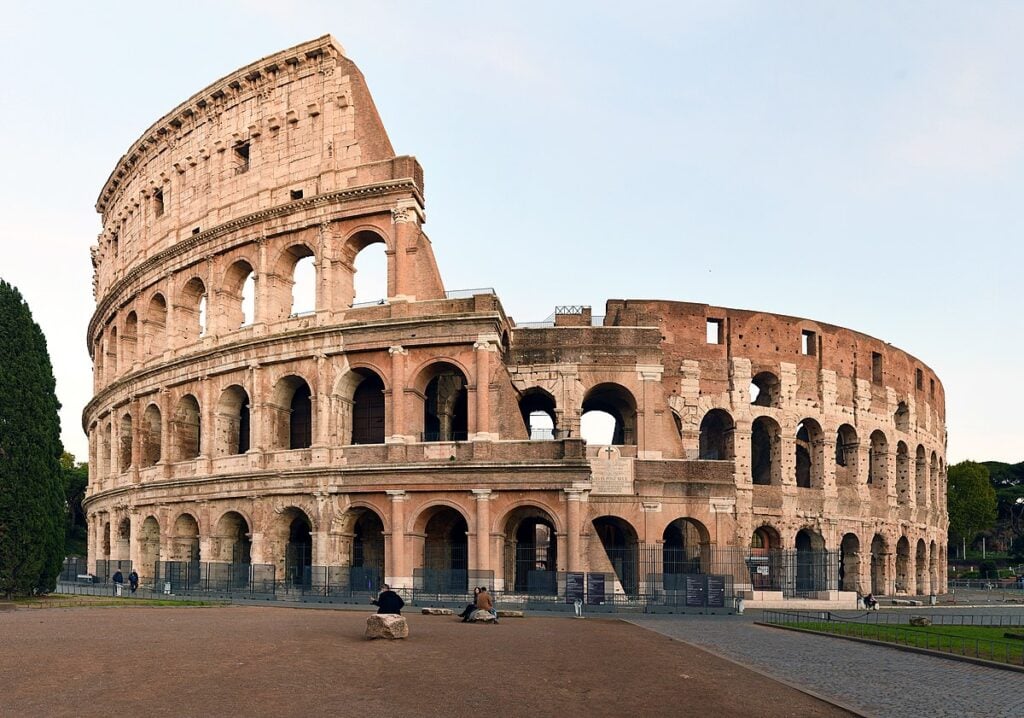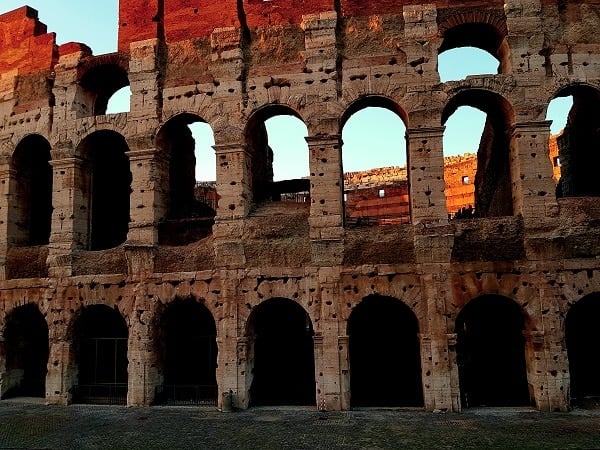The Colosseum, an enduring masterpiece of ancient Roman architecture, stands as a symbol of Rome’s imperial power and cultural heritage. Commissioned by Emperor Vespasian in AD 72 and completed by his son Titus in AD 80, this monumental amphitheater has captivated generations with its grandeur and historical significance.
Architectural Marvel
The Colosseum is a remarkable engineering feat, showcasing the advanced construction techniques of the ancient Romans. Its elliptical structure measures approximately 189 meters in length and 156 meters in width, capable of accommodating up to 80,000 spectators. The amphitheater is divided into three distinct tiers, each adorned with different architectural styles—Doric on the first level, Ionic on the second, and Corinthian on the third. This stratification not only reflects the social hierarchy of Roman society but also demonstrates the aesthetic sensibilities of the time.

Constructed primarily from concrete and stone, the Colosseum’s durability has allowed it to withstand the test of time. The arena included a retractable awning called the velarium, designed to provide shade for spectators during events. Additionally, intricate mechanisms such as trap doors and lifts facilitated the grand spectacles that entertained the Roman populace.
Cultural Significance
The Colosseum was not merely an entertainment venue; it was a powerful political tool. Throughout its history, it hosted an array of events, including gladiatorial games that served as a means for emperors to demonstrate their power and gain favor with the public. Public executions and elaborate reenactments solidified its role in the social and political life of ancient Rome.

Legacy and Preservation
Despite enduring centuries of decay, including damage from earthquakes and the removal of stones for other construction projects, the Colosseum remains a testament to Roman engineering prowess. Recognized for its cultural significance, it has undergone numerous restoration projects to preserve its structural integrity and historical value. Today, it attracts millions of visitors annually, serving as a key educational resource that sheds light on Roman history and culture.

Modern Influence
The Colosseum’s impact transcends its historical context, inspiring countless works of art, literature, and film. Frequently depicted in movies and literature, it serves as a backdrop for narratives exploring themes of heroism, tragedy, and the complexities of power. As one of the most recognized symbols of Rome, it embodies the city’s rich history and the remarkable achievements of ancient civilization.

Conclusion
The Colosseum is more than just an architectural wonder; it encapsulates the spirit of ancient Rome and the complexities of its society. As a cultural icon, it invites visitors to reflect on its storied past while continuing to inspire awe and fascination around the world. Its legacy, marked by both grandeur and brutality, remains a poignant reminder of humanity’s capacity for creativity and the darker aspects of power.

